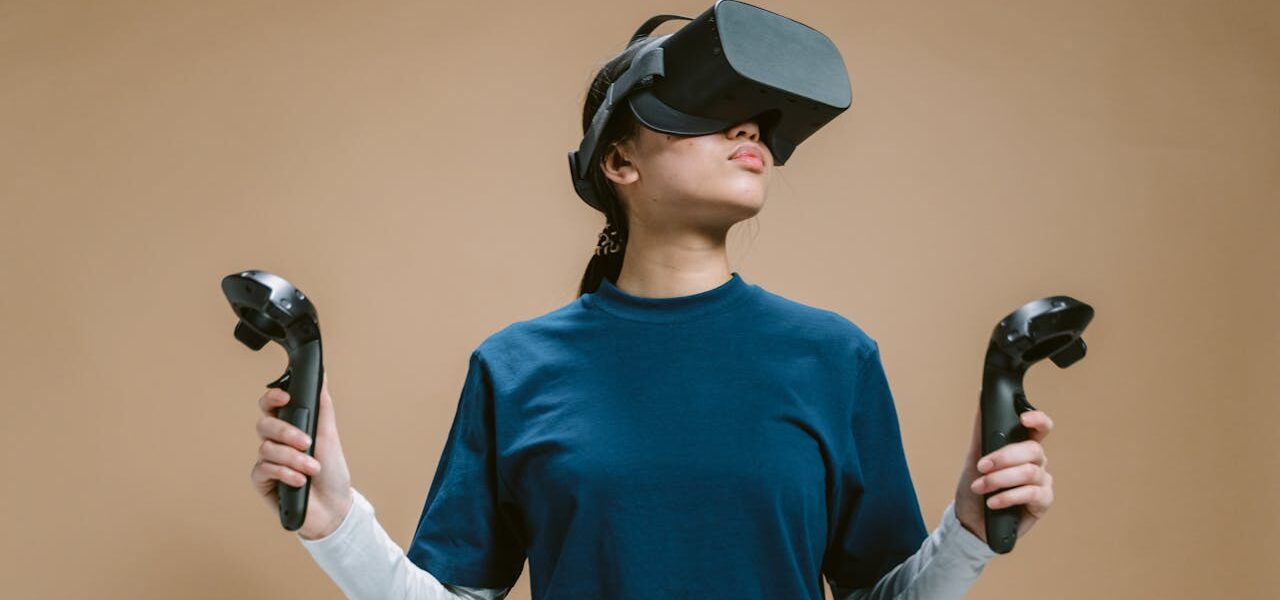Virtual Reality (VR) and Augmented Reality (AR) are revolutionizing the healthcare landscape by enhancing medical education, improving diagnoses, and refining surgical procedures. These technologies create new ways for healthcare professionals to interact with patients and for patients to experience their care.
What is (VR) Virtual and (AR) Augmented Reality?
- Augmented Reality (AR): Unlike VR, AR overlays digital information onto the real world, enhancing the user’s view of their surroundings. This is typically done using devices such as smartphones, tablets, or AR glasses, providing additional context and improving perception of the environment.
- Virtual Reality (VR): VR is an immersive technology that places users in a fully digital, 3D environment. Users experience a sense of presence in a simulated world through special headsets or glasses, enabling them to interact with virtual objects and environments.
Applications in Physician Education
Both VR and AR are integral to transforming medical education:
VR in Medical Education: VR offers doctors and students the ability to practice complex surgical procedures and other medical scenarios in a risk-free virtual environment. These simulations help medical professionals hone their skills without putting real patients in harm’s way.
AR in Medical Training: AR allows for real-time, interactive learning by providing additional information about human anatomy during dissection or surgery. Medical students can visualize physiological details via AR glasses, improving their understanding of anatomy while interacting with physical models.
Use of VR and AR in Surgical Operations
In the operating room, VR and AR are enhancing surgical precision:
AR in Surgery: Surgeons can use AR glasses to view live data about the patient’s anatomy during surgery, such as organ maps or 3D representations of tissues, allowing for more precise and informed decision-making.
VR in Surgery: Surgeons can create detailed 3D models of patients’ organs using VR, simulating surgeries beforehand. This pre-surgical preparation helps reduce the risk of complications and enhances surgical outcomes.
Mental Health Treatment
VR is becoming increasingly useful in treating mental health conditions:
Anxiety, Phobias, and PTSD: VR allows for gradual exposure to controlled stress-inducing environments, helping patients cope with phobias or PTSD. For example, patients with a fear of heights can be exposed to VR simulations of high places in a controlled setting, reducing their anxiety over time.
Pain Management: VR is being used to manage pain, particularly during painful procedures like burn wound dressing changes. By immersing patients in soothing virtual environments, their focus shifts away from the pain, reducing their discomfort.
Rehabilitation: VR also plays a role in rehabilitation, particularly for stroke or injury recovery. Through interactive, gamified exercises, patients can rebuild strength and coordination in an engaging and motivating way.
Enhancing Patient Safety and Engagement
Patient Understanding: AR and VR enhance communication between doctors and patients. Doctors can show patients what will happen during surgery through AR, improving understanding and reducing anxiety. VR simulations also help patients understand their treatment options and the associated risks and benefits.
Increased Patient Participation: As patients gain a better understanding of their treatment through visual tools like VR, they become more informed and active participants in their care, improving trust and cooperation.
CAREPOI and Its Role in Healthcare Innovation
CAREPOI supports a wide range of electronic healthcare services, including telemedicine, remote monitoring, remote clinical diagnosis, and e-triage. By integrating VR and AR technologies, CAREPOI can provide enhanced educational tools for healthcare professionals, improve patient engagement through interactive treatments, and streamline remote consultations. This integration of VR, AR, and advanced healthcare services will lead to more effective, personalized, and efficient care, ultimately benefiting both patients and healthcare providers.
Challenges of Integrating VR and AR in Healthcare
Despite the multiple benefits, the use of VR and AR in healthcare comes with significant challenges:
- Cost and Equipment: The high cost of VR and AR technology, including specialized glasses and software, can be prohibitive for healthcare facilities.
- Training: Healthcare professionals require proper training to effectively use VR and AR technologies, and many are hesitant to integrate them into their daily practice.
- Technical Issues: VR and AR systems may suffer from technical glitches, such as lag or environmental interaction issues, which can hinder their effectiveness.
- Privacy Concerns: The use of VR and AR may involve the collection and analysis of patient data, raising concerns about privacy and data security.
- Staff Resistance: The integration of these technologies may face resistance from staff who are unfamiliar with them or feel that traditional methods suffice.
Conclusion
The integration of Virtual Reality and Augmented Reality into healthcare is transforming medical education, patient care, and treatment outcomes. From enhancing surgical accuracy to providing innovative mental health therapies, these technologies are shaping the future of medicine. With continued advancements, VR and AR will become even more integral to daily healthcare practices, offering new possibilities for improving patient care and physician training.
VR and AR have the potential to fundamentally change the way doctors and patients experience healthcare. As these technologies evolve and become more accessible, platforms like CAREPOI will continue to play a pivotal role in making these advanced tools available across a broad range of healthcare services.
For more and further investigation about new technologies on virtual healthcare systems, you can visit our healthcare blog. Contact with Carepoi to find out how to improve your healthcare experience.



